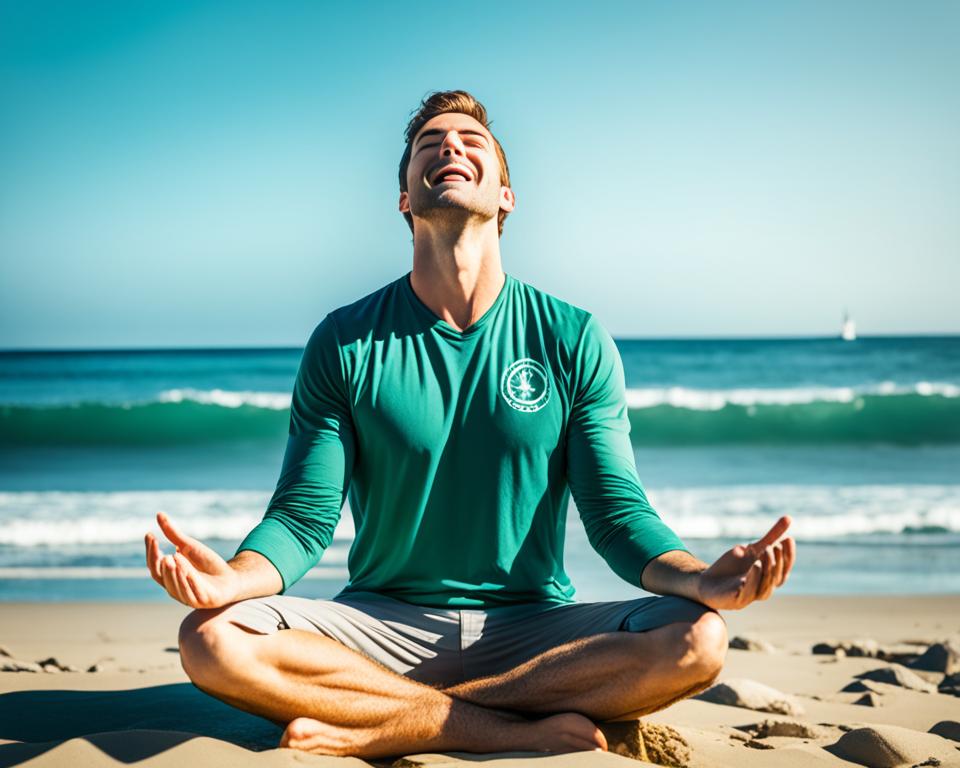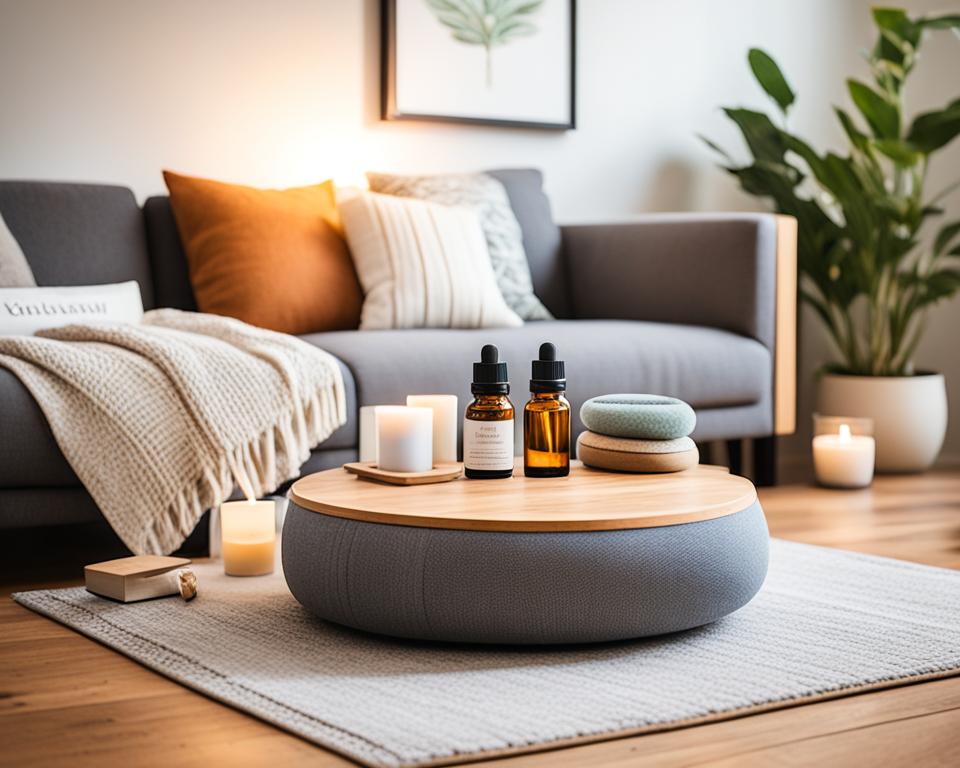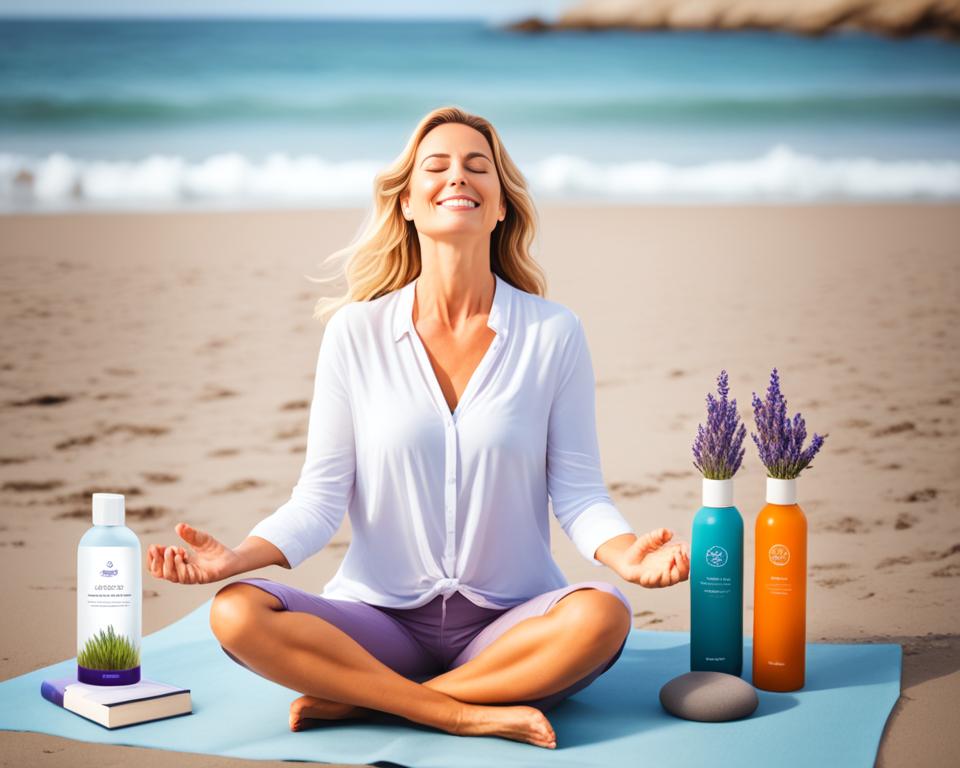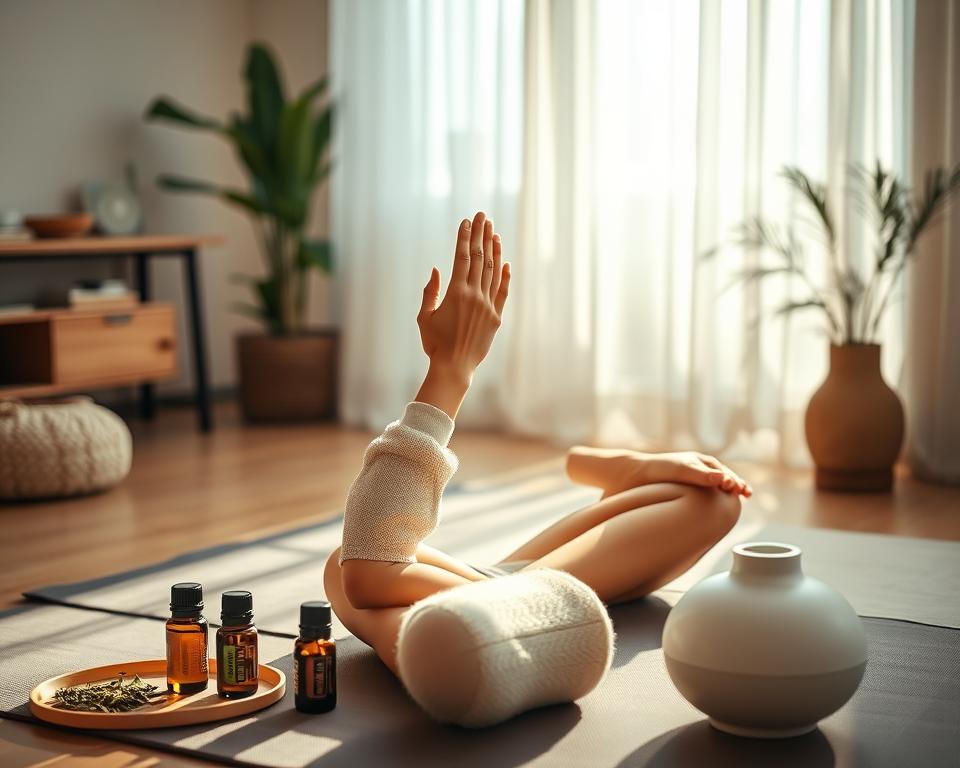This comprehensive guide will explore five proven relaxation techniques that can help individuals achieve a state of inner calm and improved focus. The techniques covered include deep breathing exercises, progressive muscle relaxation, mindfulness meditation, visualization, and gentle yoga practices. By incorporating these methods into their daily lives, readers can learn to manage stress, enhance their overall well-being, and cultivate a more balanced and centered mindset.
Read more interesting information at ::mbp-ehime
Introduction to Relaxation Techniques
In the fast-paced, high-stress environment of modern living, the importance of incorporating relaxation techniques into one’s daily routine cannot be overstated. Chronic stress can have detrimental effects on physical and mental health, leading to a range of issues such as anxiety, depression, cardiovascular problems, and weakened immune systems.
Importance of Relaxation in Modern Life
As the demands of work, family, and daily life continue to escalate, the need for effective stress management strategies has become increasingly critical. Incorporating relaxation techniques into one’s routine can serve as a powerful antidote to the negative consequences of chronic stress, helping individuals to achieve a greater sense of inner calm and balance.
Benefits of Incorporating Relaxation Techniques
By practicing effective relaxation techniques, individuals can counteract the negative consequences of stress, promote better overall health, and improve their quality of life. These techniques can help to reduce anxiety, lower blood pressure, boost immune function, alleviate physical tension, and foster a more positive, focused mindset.
Deep Breathing Exercises
Deep breathing exercises are a fundamental and highly effective relaxation technique. By focusing on the breath and engaging the diaphragm, individuals can trigger the body’s natural relaxation response, leading to a state of calmness and focus.
Diaphragmatic Breathing
Also known as “belly breathing,” diaphragmatic breathing involves inhaling deeply through the nose, allowing the abdomen to expand, and exhaling slowly through the mouth. This technique helps to oxygenate the body, reduce muscle tension, and promote a sense of inner peace.
4-7-8 Breathing Technique
The 4-7-8 breathing technique is a simple yet powerful method for inducing relaxation. It involves inhaling for 4 seconds, holding the breath for 7 seconds, and then exhaling for 8 seconds. This rhythmic pattern helps to calm the mind, lower blood pressure, and alleviate stress and anxiety.
Progressive Muscle Relaxation
Progressive muscle relaxation is a powerful technique that can help individuals achieve a deep state of physical and mental relaxation. This method involves systematically tensing and releasing different muscle groups throughout the body, allowing the practitioner to become more aware of physical tension and learn how to let it go.
By consciously contracting and then releasing the muscles, one can experience a noticeable difference in the level of muscular tension. This heightened awareness of bodily sensations can then be used to actively release stress and promote a sense of calm and well-being.
The process of progressive muscle relaxation typically involves the following steps:
- Choose a comfortable, quiet environment free from distractions.
- Begin by focusing on your breathing, taking slow, deep breaths.
- Tense a specific muscle group, such as the hands or feet, for several seconds, concentrating on the sensation of tension.
- Slowly release the muscle tension, allowing the muscles to relax completely.
- Repeat this process, systematically working through each major muscle group in the body.
- As you progress, notice the contrast between the tensed and relaxed states, and allow the relaxation to deepen.
By incorporating progressive muscle relaxation into your daily routine, you can effectively manage stress, reduce muscle tension, and cultivate a profound sense of inner calm and focus. This versatile technique can be practiced anywhere, making it a valuable tool for individuals seeking to enhance their overall well-being and quality of life.
5 Relaxation Techniques
This section serves as an overview of the five key relaxation techniques that will be explored in-depth throughout the article: deep breathing exercises, progressive muscle relaxation, mindfulness meditation, visualization techniques, and gentle yoga practices. These methods have been carefully selected for their proven effectiveness in inducing a state of calm, focus, and overall well-being.
| Relaxation Technique | Description |
|---|---|
| Deep Breathing Exercises | By focusing on the breath and engaging the diaphragm, individuals can trigger the body’s natural relaxation response, leading to a state of calmness and focus. |
| Progressive Muscle Relaxation | This technique involves systematically tensing and releasing different muscle groups throughout the body, helping individuals become more aware of physical tension and learn to let go of it. |
| Mindfulness Meditation | Cultivating a non-judgmental, present-moment awareness can help individuals let go of worries about the past or future and remain grounded in the here and now. |
| Visualization Techniques | The use of the imagination to create mental images or scenarios can induce a state of relaxation and calm, shifting the focus away from worries and towards more positive, soothing mental content. |
| Gentle Yoga Practices | By combining physical postures, controlled breathing, and meditation, gentle yoga can help to calm the mind, release muscular tension, and improve overall well-being. |
Each of these relaxation techniques will be explored in detail in the sections that follow, providing readers with a comprehensive understanding of how to incorporate these methods into their daily lives for enhanced calm, focus, and overall well-being.
Mindfulness Meditation
Mindfulness meditation is a powerful relaxation technique that involves cultivating a non-judgmental, present-moment awareness. By focusing one’s attention on the breath, sensations, or other aspects of the immediate experience, individuals can learn to let go of worries about the past or future, and instead, remain grounded in the here and now.
Focused Attention Meditation
Focused attention meditation, also known as concentrative meditation, involves directing one’s attention to a specific object, such as the breath, a mantra, or a visual point. This practice helps to train the mind to stay focused and present, reducing the tendency to become distracted by thoughts or external stimuli.
Open Monitoring Meditation
Open monitoring meditation, on the other hand, involves cultivating a more broad and non-judgmental awareness of one’s present-moment experience. Instead of focusing on a single object, practitioners of open monitoring meditation are encouraged to observe all aspects of their experience, including thoughts, emotions, and sensations, without getting caught up in them.
Visualization Techniques
Visualization techniques involve the use of the imagination to create mental images or scenarios that can induce a state of relaxation and calm. These powerful methods can be highly effective in reducing stress and anxiety, as they help to shift the focus away from worries and towards more positive, soothing mental content.
Guided Imagery
Guided imagery is a technique that involves the creation of sensory-rich mental pictures to promote relaxation and well-being. By following the guidance of a skilled practitioner or recording, individuals can immerse themselves in calming scenes or experiences, such as a serene beach or a peaceful forest. This approach can be particularly beneficial for those seeking to manage pain, anxiety, or other stress-related issues.
Creative Visualization
Creative visualization takes the concept of guided imagery a step further, empowering individuals to actively shape and direct their own mental images. By visualizing positive outcomes, desired goals, or personal growth, practitioners can tap into the power of the subconscious mind to manifest change and facilitate a state of deep relaxation. This technique can be a valuable tool for boosting self-confidence, reducing fears, and cultivating a more optimistic outlook on life.

Gentle Yoga Practices
Gentle yoga practices can be an effective way to promote relaxation and reduce stress. By combining physical postures, controlled breathing, and meditation, yoga can help to calm the mind, release muscular tension, and improve overall well-being.
Hatha Yoga
Hatha yoga is a gentle and slow-paced form of yoga that focuses on physical postures, known as asanas, coupled with deep breathing exercises and meditation. This approach emphasizes the harmonious balance between the body and the mind, making it an excellent choice for individuals seeking a relaxing and restorative practice.
Restorative Yoga
Restorative yoga is a gentle style of yoga that uses props, such as blankets, blocks, and straps, to support the body in various poses. This practice is designed to promote deep relaxation, reduce stress, and restore the body’s natural balance. By holding poses for extended periods, restorative yoga allows the body to fully let go and release tension, leading to a profound sense of calm and rejuvenation.
Combining Relaxation Techniques
While each of the five relaxation techniques covered in this article can be effective on their own, combining multiple methods can often lead to even greater benefits. By integrating different relaxation techniques, individuals can create a multifaceted approach to managing stress and promoting inner calm.
Integrating Different Methods
For instance, incorporating both deep breathing exercises and progressive muscle relaxation can provide a powerful one-two punch against stress. The deep breathing can help to calm the mind and trigger the body’s natural relaxation response, while the progressive muscle relaxation can release physical tension and further enhance the sense of overall well-being.
Similarly, pairing mindfulness meditation with visualization techniques can be a highly effective way to quiet the chatter of the mind and immerse oneself in a soothing, restorative mental state. The mindfulness practice can help to anchor the individual in the present moment, while the visualization can provide a peaceful mental escape from the stresses of everyday life.
Creating a Personalized Routine
When it comes to combining relaxation techniques, the key is to experiment and find the right mix that works best for the individual. Some may prefer to incorporate a variety of methods throughout the day, while others may find that a more streamlined routine, focusing on one or two core techniques, is more effective for their needs.
By creating a personalized relaxation routine that integrates the methods that resonate most, individuals can cultivate a powerful toolkit for managing stress, promoting well-being, and living a more calm and focused life.
Overcoming Barriers to Relaxation
While the benefits of incorporating relaxation techniques into one’s daily life are well-documented, many individuals may face challenges in actually implementing these practices. Two common barriers to relaxation include time constraints and the presence of distractions.
Managing Time Constraints
In today’s fast-paced world, where demands on our time and attention seem endless, finding the space to prioritize relaxation can be a significant challenge. Many people struggle to carve out even a few minutes each day to engage in practices like deep breathing, meditation, or gentle yoga. To overcome this barrier, it’s crucial to schedule relaxation into one’s daily routine, treating it with the same importance as other essential activities.
Dealing with Distractions
The constant bombardment of digital notifications, the temptation to check social media, and the endless stream of tasks and responsibilities can make it difficult to truly immerse oneself in relaxation practices. To combat these distractions, it’s helpful to create a dedicated space for relaxation, free from external stimuli, and to set clear boundaries around when and how one will engage in these activities.
| Barrier to Relaxation | Strategies for Overcoming |
|---|---|
| Time Constraints |
|
| Distractions |
|
By addressing these common barriers and developing strategies to overcome them, individuals can more effectively incorporate relaxation techniques into their daily lives, reaping the many benefits of a calmer, more focused mindset.
Relaxation Techniques for Specific Situations
While the relaxation techniques discussed in this article can be beneficial in a wide range of situations, certain methods may be particularly well-suited for addressing specific challenges or needs. By understanding the unique applications of these techniques, individuals can tailor their relaxation practices to better meet their personal requirements and achieve optimal results.
Stress Relief Techniques
For individuals seeking immediate stress relief, techniques such as deep breathing exercises and progressive muscle relaxation can be highly effective. These methods work quickly to activate the body’s natural relaxation response, reducing physiological signs of stress and promoting a sense of calm.
Mindfulness meditation can also be a powerful tool for managing stress, as it helps individuals to become more aware of their thoughts and emotions without becoming overwhelmed by them. By cultivating a non-judgmental, present-moment focus, practitioners can learn to let go of worries and find greater inner peace.
Techniques for Improved Sleep
Achieving quality sleep is essential for overall health and well-being, and certain relaxation techniques can be particularly beneficial for addressing sleep-related issues. Visualization techniques, such as guided imagery, can help to quiet the mind and induce a state of deep relaxation, making it easier to fall asleep and stay asleep.
Gentle yoga practices, with their emphasis on controlled breathing and gentle movements, can also be an effective way to prepare the body and mind for restful sleep. By incorporating these techniques into their pre-bedtime routines, individuals can cultivate better sleep habits and wake up feeling more rested and refreshed.
Making Relaxation a Habit
Incorporating relaxation techniques into one’s daily life requires a commitment to developing new habits. To make relaxation a sustainable part of one’s routine, it’s important to set realistic goals and establish a system for tracking progress and maintaining accountability.
Setting Realistic Goals
When it comes to making relaxation a habit, it’s crucial to set achievable goals that align with your unique needs and lifestyle. This might involve committing to a specific relaxation practice for a certain duration each day, or gradually increasing the frequency of your sessions over time. The key is to start small and build upon your successes, rather than overwhelming yourself with unrealistic expectations.
Tracking Progress and Accountability
Regularly monitoring your progress and maintaining a sense of accountability can help reinforce your relaxation habit. This can be as simple as keeping a journal to record your experiences, noting any changes in your stress levels or overall well-being. Alternatively, you might consider enlisting the support of a friend or family member who can check in on your progress and provide encouragement along the way.
Resources for Learning Relaxation Techniques
For individuals interested in exploring and learning more about the various relaxation techniques covered in this article, there is a wealth of resources available. From informative books and engaging online tutorials to local classes and workshops, there are numerous opportunities to deepen one’s understanding and practice of these methods.
Books and Online Resources
For those who prefer to learn at their own pace, a variety of books and online resources are available. Best-selling titles like “The Relaxation and Stress Reduction Workbook” by Martha Davis, Elizabeth Robbins Eshelman, and Matthew McKay, or “Mindfulness for Beginners” by Jon Kabat-Zinn, offer comprehensive guides on implementing a range of relaxation techniques. Additionally, many reputable websites, such as the American Psychological Association’s “Stress Management” page and the Mayo Clinic’s “Stress Relief” section, provide informative articles, videos, and tutorials on the topic.
Additional related content ::Affordable Diabetic Supplies for Better Health Management
Local Classes and Workshops
For individuals who thrive in a more interactive learning environment, many communities offer local classes and workshops focused on relaxation techniques. Yoga studios, community centers, and healthcare providers often host sessions on practices like mindfulness meditation, gentle yoga, and progressive muscle relaxation. These hands-on experiences can be particularly beneficial for those new to the techniques, as they provide the opportunity to receive guidance and feedback from experienced instructors.
| Resource Type | Examples | Benefits |
|---|---|---|
| Books | “The Relaxation and Stress Reduction Workbook”, “Mindfulness for Beginners” | Comprehensive guides, self-paced learning |
| Online Resources | APA “Stress Management”, Mayo Clinic “Stress Relief” | Informative articles, videos, and tutorials |
| Local Classes and Workshops | Yoga studios, community centers, healthcare providers | Hands-on guidance, interactive learning |

Conclusion
In conclusion, the five relaxation techniques explored in this article – deep breathing exercises, progressive muscle relaxation, mindfulness meditation, visualization techniques, and gentle yoga practices – offer a comprehensive toolkit for individuals seeking to cultivate a greater sense of inner calm and focus in their lives.
By incorporating these methods into their daily routines, readers can learn to effectively manage stress, enhance their overall well-being, and develop a more balanced and centered mindset. Whether it’s the soothing power of controlled breathing, the release of physical tension through progressive muscle relaxation, the grounding presence of mindfulness meditation, the calming effects of visualization, or the restorative benefits of gentle yoga, each technique provides a unique pathway to relaxation and inner peace.
As readers continue their journey towards a more relaxed and focused lifestyle, it’s important to remember that the key is to find the combination of methods that resonates most with their individual needs and preferences. By experimenting with the various relaxation techniques and creating a personalized routine, individuals can unlock the transformative potential of these practices and embark on a path towards a more mindful, balanced, and fulfilling life.



